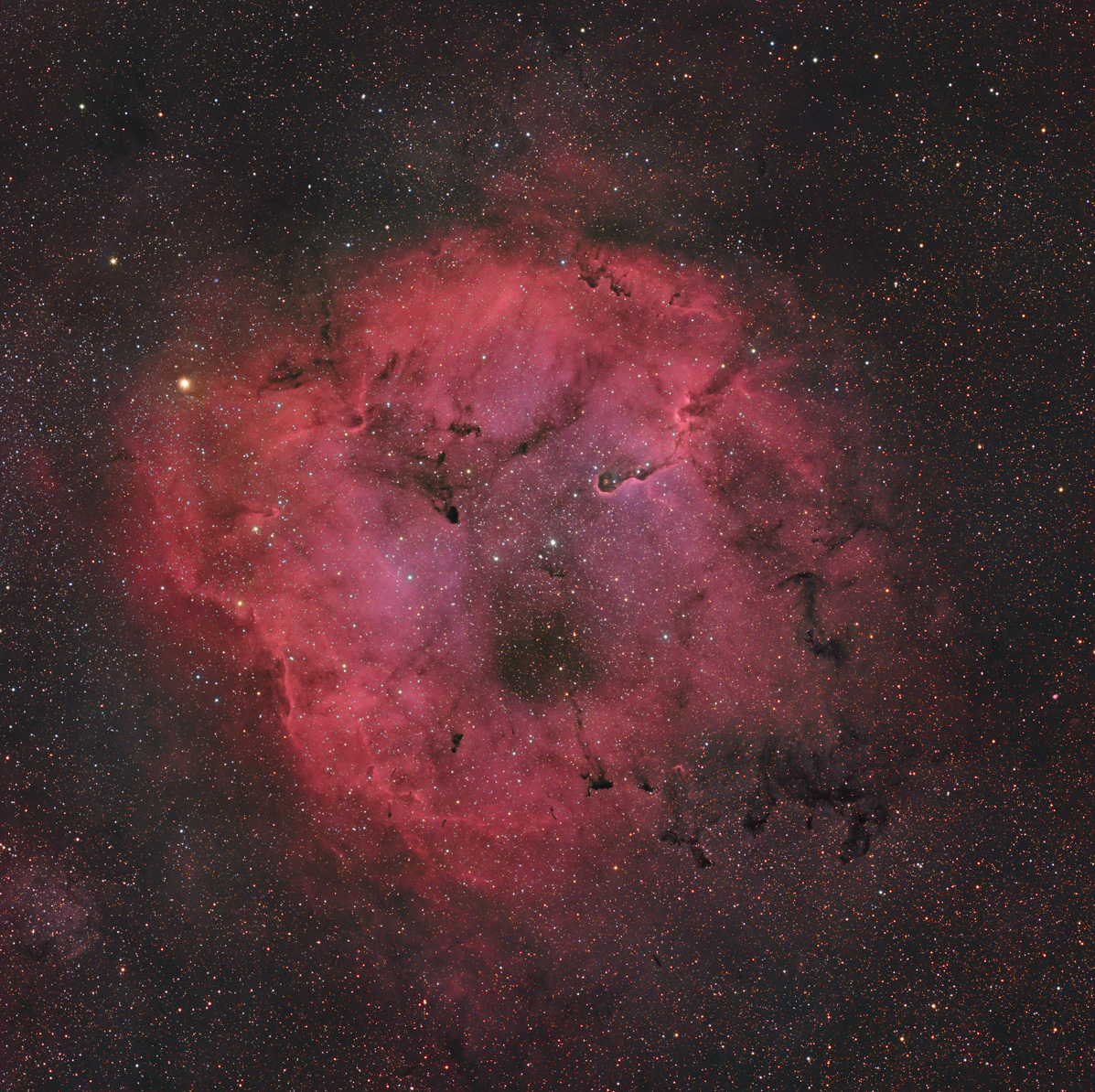IC1396
 All Images Copyright Steve
Cannistra
All Images Copyright Steve
Cannistra
Narrowband
images
Please
click
here
for a narrowband full frame, smaller view (20%)
Please
click
here
for a narrowband full
frame, medium view (30%)
Please
click
here
for a narrowband full
frame, larger view (40%)
Please
click
here
for a narrowband full
frame, largest view (50%)
Please
click
here for a central crop of IC1396
Please
click
here
for the largest cropped view
RGB images
Please
click
here
for an RGB full frame, smaller view (20%)
Please
click
here
for an RGB full
frame, medium view (30%)
Please
click
here
for an RGB full
frame, larger view (40%)
Please
click
here
for an RGB full
frame, largest view (50%)
Characteristics:
RA: 21h 39m 08s (J2000)
Dec: 57degrees 29' 50" (J2000)
PA: plus 317 degrees (Pinpoint)
Description:
IC1396 is a large emission nebula in Cepheus. Radiation
from the star HD206267 has
cleared out a central
portion from the nebula and has also blown away gas and dust radially,
resulting in a variety of dark globules that roughly point towards the
center. These are called "cometary globules"
in recognition of their overall shape, which consists of a head
followed by a tail of dust that is being blown backwards by HD206267's
solar wind. The most conspicuous globule is 1396A, also known as
the "Elephant Trunk,"
which contains a subtle reflection nebula vdb142.
Other cometary globules can be appreciated in the full frame
version of this image. Although
the dark gas and
dust are opaque to visible light, infrared light passes through this
region easily, permitting a view of the inner workings of the Elephant
Trunk. Please click here
for an infrared view of this area taken through the Space InfraRed
Telescope Facility (SIRTF), now known
as the Spitzer Space Telescope. Please be sure to check out
the larger sized images for greater detail. Rob
Gendler has an excellent
description of IC1396 on his website.
Photographic
Details:
Dates: August 20, 26, 27, 28,
31; September 1, 2010
Scope: Takahashi
FSQ106 at f5 on the Takahashi NJP
Mount
Autoguider: SBIG ST-402 with
60mm guidescope, focal length 227mm
Camera: Apogee U16M at -20C, with
7 position 50mm square filter wheel (Apogee FW50-7S)
Filters: Baader
narrowband
filters, 50mm square
Exposures: Ha, 6 hours; OIII, 5 hours;
SII, 6 hours; R, 3 hours; G, 3 hours; B, 3 hours, all unbinned.
Total
exposure 26 hours.
Post-processing:
Calibrated in Maxim, aligned and
stacked using DeepSkyStacker, followed
by DDP
in ImagesPlus (IP). Further processing in Photoshop CS (16
bit format) using the clipped layer mask method originally described by
Travis
Rector. Star colors obtained from RGB data.
Please
note: Graphics on this website
may not be reproduced without author permission.
Back to Nebulae
Home
